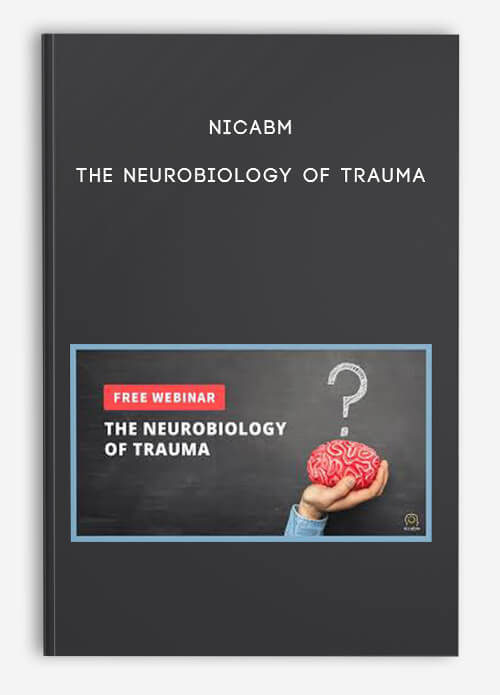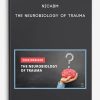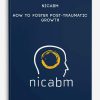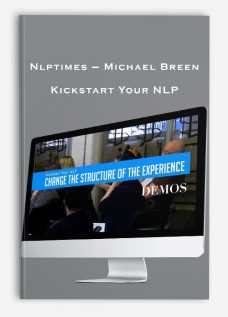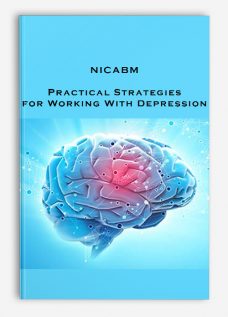NICABM – The Neurobiology of Trauma
Original price was: $197.00.$45.00Current price is: $45.00.
Product Include:
File size:
- Description
Description
NICABM – The Neurobiology of Trauma
**More information:
Get NICABM – The Neurobiology of Trauma at bestoftrader.com
Description
The Neurobiology of Trauma and How to Apply It To Your Work with Clients
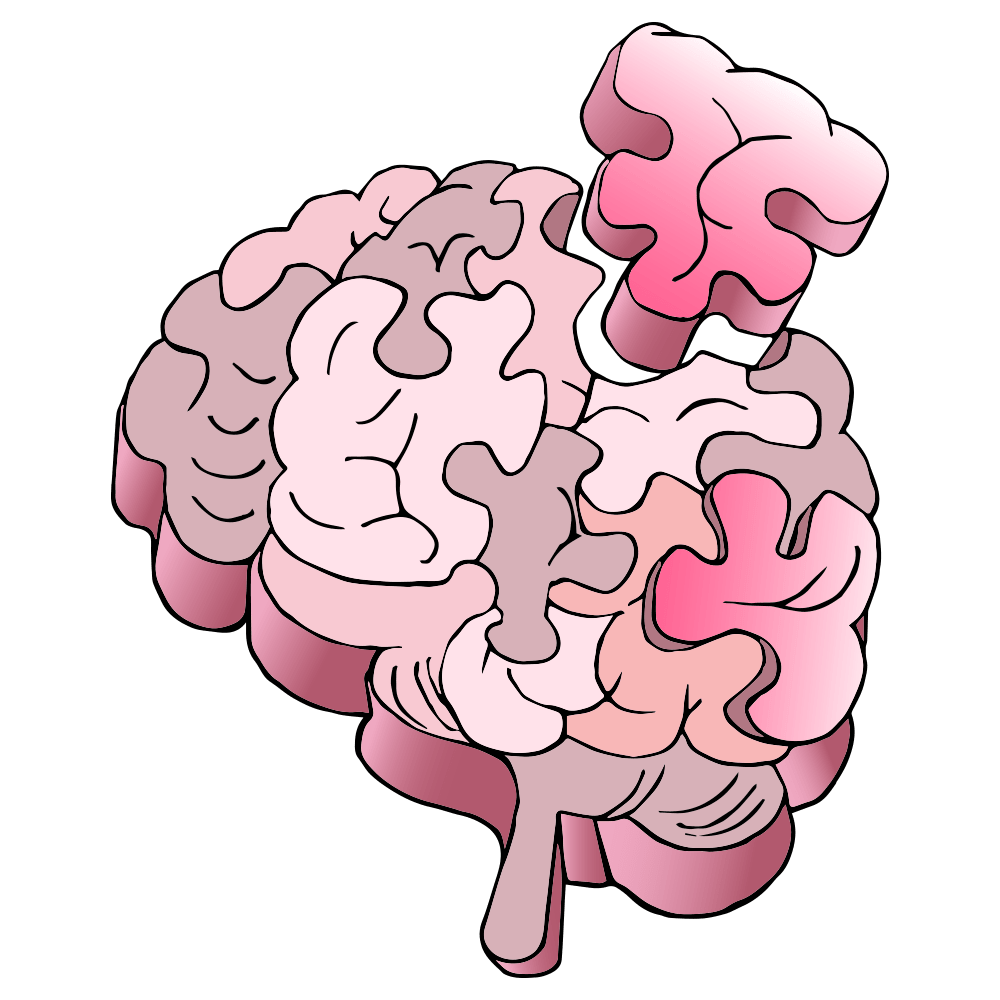 During a traumatic event, the survival brain can take over and knock critical thinking offline.
During a traumatic event, the survival brain can take over and knock critical thinking offline.
To fully help clients heal from trauma, we have to understand what’s happening in the traumatized brain – while the traumatic event is occurring as well as how the client gets held hostage to threat cues long afterward.
The brain is so important to working with trauma that we wanted to create a program that solely focused on how to treat it.
We’ll look at the specific brain areas that get altered by trauma, and how this neutralizes the client’s ability to problem-solve.
5 of the top experts in the world will share how they treat clients who struggle with trauma. This brand new program brings together the sharpest strategies for working with a traumatized brain.
The Neurobiology of Trauma

How Trauma Overloads the Brain and Takes Away Its Ability to Cope
Bessel van der Kolk, MD Dan Siegel, MD
- The key part of a traumatized brain that gives trauma such enormous power
- The critical factor that allows the brain to successfully cope with a traumatic event
- The brain science underlying neurobiological shut-down

How Trauma Impacts Specific Areas of the Brain (And How This Can Affect Your Treatment)
Ruth Lanius, MD, PhD Bessel van der Kolk, MD Dan Siegel, MD
- How the “survival brain” gets altered after a traumatic experience (and how to look for this in your client)
- Two hormones that leave the brain highly vulnerable when traumatic memories are forming
- What happens in the brain that makes some clients unable to distinguish threat cues from non-threatening stimuli
- The critical part of the brain stem impacted during trauma

How to Prevent Dissociation and Its Negative Influence on Trauma Recovery
Stephen Porges, PhD Pat Ogden, PhD Dan Siegel, MD
- Why dissociation may be driving your client’s trauma deeper into their nervous system
- How to work with dissociation and shift a client’s reaction to trauma
- One strategy to prevent dissociation and retrain a client’s trauma response

Strategies to Foster Powerful Brain Integration After Trauma
Pat Ogden, PhD Dan Siegel, MD
- Two distinct signs that your client might have impaired brain integration from trauma
- How the midbrain holds the key to the freeze response
- What posture reveals about a history of trauma, and how to work with it in the healing process

Epigenetics and the Brain: How Trauma Affects Gene Expression
Dan Siegel, MD
- Why systemic inflammation could be directly linked to how trauma impacts the brain
Register Here for $197
and get all the videos, audios, transcripts, learning tools, plus 2 bonuses
to help you work more effectively with a client’s trauma
3 CE/CME Credits or Clock Hours are available for purchase at checkout.
Click HERE to get information about CE/CME credits and clock hours as well as speaker disclosures
For This Short Course on the Neurobiology of Trauma, We Brought Together Some of the Top Experts in the Field

DAN SIEGEL, MD
Executive Director of the Mindsight Institute; Co-Director of UCLA’s Mindful Awareness Research Center; author of Mindsight: The New Science of Personal Transformation and The Mindful Therapist: A Clinician’s Guide to Mindsight and Neural Integration

RUTH LANIUS, MD, PHD
Professor of Psychiatry and Director of the Post-traumatic Stress Disorder (PTSD) research unit at the University of Western Ontario. Coauthor of The Impact of Early Life Trauma on Health and Disease: The Hidden Epidemic, and Healing the Traumatized Self: Consciousness, Neuroscience, Treatment.

BESSEL VAN DER KOLK, MD
Neuroscientist and Professor of Psychiatry at Boston University Medical School. Author of The Body Keeps the Score: Brain, Mind, and Body in the Healing of Trauma

PAT OGDEN, PHD
Pioneer in Somatic Psychology; Founder and Director of Sensorimotor Psychotherapy Institute (SPI); Co-founder of the Hakomi Institute; Author of Sensorimotor Psychotherapy: Interventions for Trauma and Attachment

STEPHEN PORGES, PHD
Developer of Polyvagal Theory; Distinguished University Scientist at the Kinsey Institute at Indiana University Bloomington and Research Professor in the Department of Psychiatry at University of North Carolina Chapel Hill

Course Director
Ruth Buczynski, PhD
Here’s What You’ll Get:
Everything is yours to keep forever in your professional library
| Downloadable videos so you can watch at your convenience, on any device | |
| Audio recordings you can download and listen to at home, in the car, at the gym or wherever you like | |
| TalkBack Segments to distill key ideas (this is where we “land” the session) | |
| Next Week in Your Practice sessions to give you concrete strategies to use with patients | |
| Professionally-formatted transcripts of the sessions, to make review and action simple | |
| Two downloadable bonus videos to help you work more effectively with trauma |
Get 2 Bonuses That Give You Even More Strategies for Working with a Client’s Trauma

How Trauma Affects the Major Brain Networks
Ruth Lanius MD, PhD
- Three major disruptions to the default mode network after early life trauma
- How early life trauma harms a person’s sense of self
- How to assess central executive network functioning after trauma
- Why trauma hurts our client’s ability to plan and focus
- Why the salience network is important and two ways trauma disrupts it

Soothe the Fear of a Traumatized Brain: How Neurofeedback Is Changing Trauma Treatment
Sebern Fisher, MA
- Why neurofeedback can be a game-changer for trauma patients
- How brain waves contribute to trauma symptoms
- What our patients’ brain waves tell us about their symptoms, and what their symptoms tell us about their brain waves
- Re-establishing attachment through brain wave training
- How to calm the fear in a traumatized brain
Register Here for $197
and get all the videos, audios, transcripts, learning tools, plus 2 bonuses
to help you work more effectively with a client’s trauma
3 CE/CME Credits or Clock Hours are available for purchase at checkout.
Click HERE to get information about CE/CME credits and clock hours as well as speaker disclosures
Plus, You’ll Get Practical Tools to Help You Take Action Immediately and Effectively
Synthesize Key Concepts So You Can Use Them Immediately
In the TalkBack Session, Ron Siegel, PsyD and Ruth Lanius, MD, PhD join me to dig more deeply into the key ideas. Our job is to make yours easier by streamlining the information and making sure each point is crystal clear. We’ll clarify critical concepts and break it all down so you can gain confidence in your understanding.
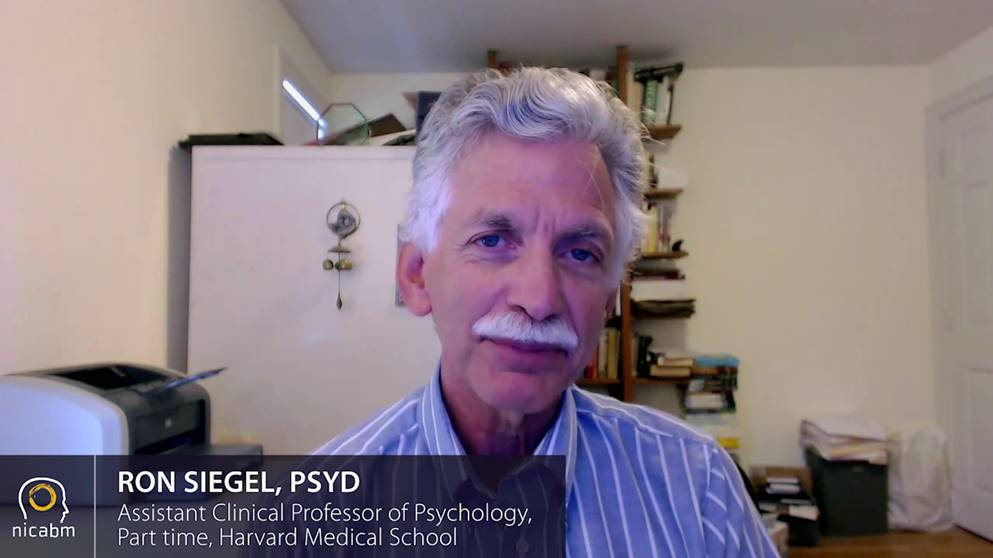
Discover Concrete Practices That Will Work in Your Life (and with Your Patients)
Then, with “next week” in mind, we’ll turn smart ideas into easy-to-use applications for your work. In Next Week in Your Practice, Joan Borysenko, PhD and Bill O’Hanlon, LMFT join me to give you specific practices and exercises based on each session. You’ll get strategies you can use with your clients right away.
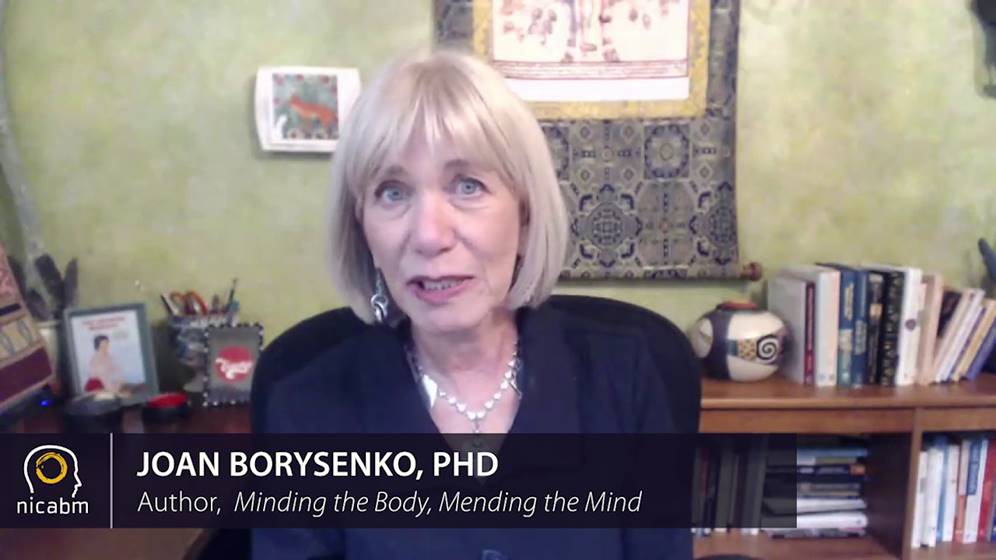
Uncover Core Ideas and Techniques at-a-Glance So You Have a “Cheat Sheet” When You Need It Most
The QuickStart Guide will help you stay fresh and confident as you turn these teachings into action. We’ve gathered all the essential tools and methods from the program into a concise, easy-to-use guide so you can quickly review and apply these ideas when you need them most. It’s an at-a-glance reference to the most powerful concepts and strategies for working with patients who have experienced trauma.
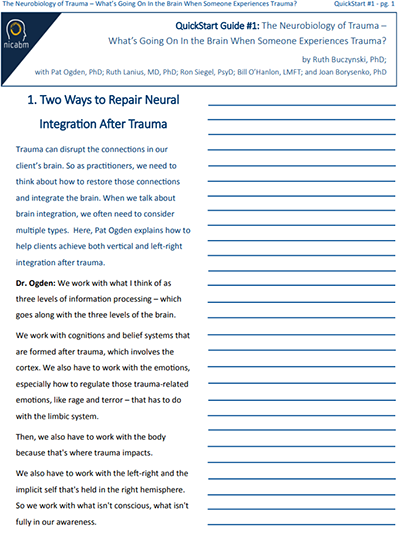
Quickly Recall Crucial Details So You Can Apply Them with Confidence
Our Professional Transcript will help you reinforce key ideas so you can integrate them into your life and work. We’ve designed your transcript with an easy-to-use table of contents, clear, organized formatting, and helpful highlight quotes so you’ll have the information and exercises you need at your fingertips.
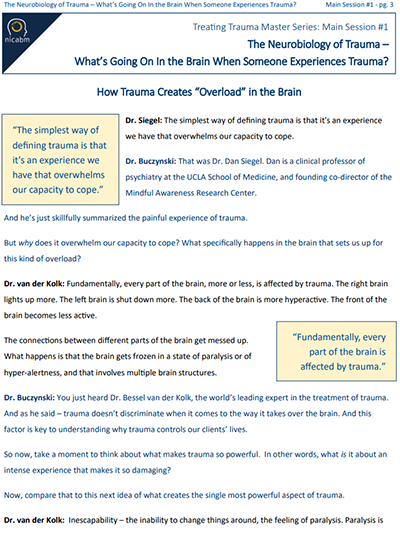
Here’s What Your Peers Have Experienced In NICABM Programs

. . . instrumental in opening my mind and heart to understanding trauma.
“These seminars have been instrumental in opening my mind and heart to understanding trauma. They are brief and accessible and of such high quality that I’ve been able to glean real understanding and a starting point for further study. I can’t say enough about them. I have recommended them to so many of my colleagues and they say the same things I do about them. Thank you Ruth!”
Angela Lawrence, Drug and Alcohol Counselor
British Columbia, Canada

The material covered has . . . fully supported my purpose, enhancing my knowledge of the theories behind the actions taken.
“I am a soldier, who works with other soldiers and their families (The PTSD Retreat), in reference to PTSD. We, as soldiers, are all taught the very basics of PTSD, in what we call “death-by-PowerPoint,” but it never goes beyond this. Indeed, it is repeated over and over, without change, and it rarely if ever gets to the families. The material covered in here has fully supported my purpose, enhancing my knowledge of the theories behind the actions taken. I am so grateful to have been able to follow this series and look forward to furthering my education with this entity. Thank you”
D. Nicole Johnson, Drug and Alcohol Counselor
Starr Founder, The PTSD Retreat

. . . very cost effective and practical . . .
“These programs offer a broad spectrum of both information and specific guidelines with top experts in different fields of addressing human suffering. All in a very cost effective and practical way. Rather than thousands of dollars spent on the cost of conference I can learn in the comfort of my own home or office, on my own schedule. Certainly recommend any of these series to my colleagues.”
Ian Macnaughton, PhD, Psychotherapist
Vancouver, BC, Canada

My clients have been able to build their confidence. . .
“My clients have been able to build their confidence in their ability to self-regulate on their own in pretty difficult situations, including work and family of origin situations. Their success has then built their self-esteem as they can see that they can be successful in changing some fairly habitual ways of interacting and hurting themselves. It is a positive cycle that builds upon itself”
Nancy Lasater, MSW, LCSW
Boulder, CO
Why the Transcript Is Essential:
- The transcript makes it easy to go back and double check concepts, citations and names that are mentioned
- We put in a table of contents to make it easy for you to find the exact part of the webinar you need
- Having the concepts already written allows you to take notes on how you’re going to use the ideas rather than transcribing the ideas
- Some people simply learn better by reading than by listening or watching
- You will be able to print out and share techniques presented in the session with your patients

“I really liked being able to follow along with the transcripts as I listened…it was nice not to feel like I had to take notes. I really feel like I remember more when I both hear and see at the same time.”

